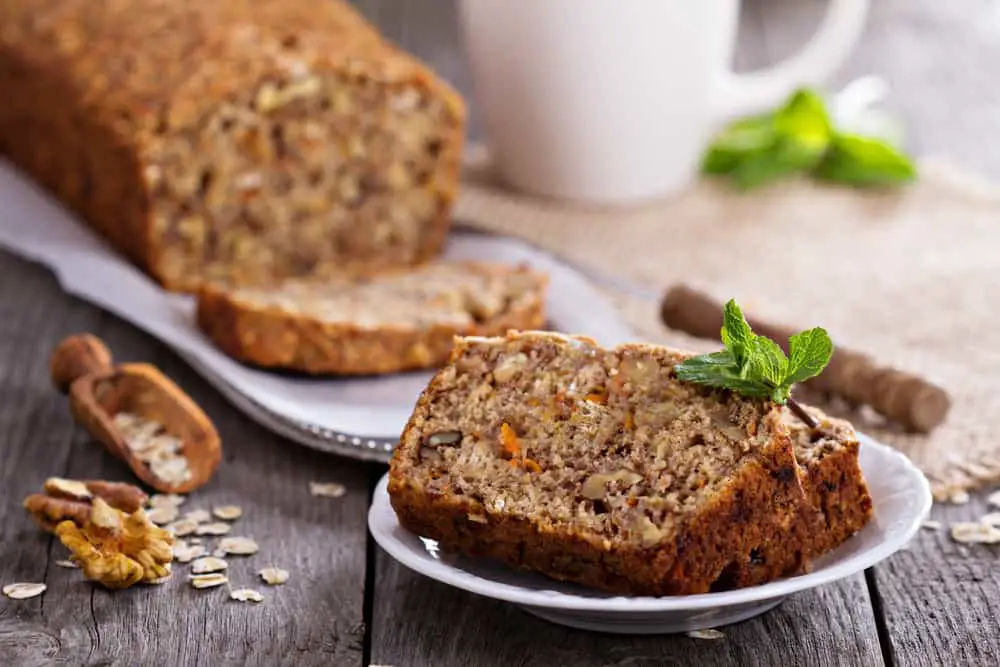Last Updated on 23rd April 2022 by
I know there’s something wrong with putting the words “vegan” and “cake” together. Vegan food is supposed to be guilt-free food, while cake is somewhat of a guilty pleasure.
But hear me out!
For people who love cakes but are mainly vegan, no one will take away your favorite cakes from you. Vegan cakes exist, and they’re just as delectable as your regular cakes. Find out how!
What is a Vegan Cake?
A vegan cake is, well, your typical cake—just this time, it is devoid of any traces of ingredients or products coming from animals! Hence, a vegan cake is not made of eggs, dairy products (like milk, butter, and cream), gelatin, and chocolate.
What is a vegan cake made of? At its simplest—be it for birthdays, weddings, or just simply for desserts—it is a plant-based, non-dairy cake.
But how do you bake a vegan cake? The answer is simple: just bake it like how you make regular, non-vegan cakes!
How to Make Vegan Chocolate Cake?
Now that you have gotten yourself acquainted with the basics of a vegan cake and how to bake one, you are probably asking yourself how or what you will substitute for the milk chocolate you are supposed to use for this plant-based chocolate cake iteration. (For this article, the vegan chocolate cake recipe we will use is a one-bowl vegan chocolate cake.)
You could use 100% unsweetened cocoa powder as the foundation of your vegan cake’s prominent defining flavor. Moreover, for this vegan cake to be an actual cake, you need all-purpose flour, raw white sugar, baking soda, salt, apple cider vinegar, vanilla extract, canola oil, water, and chocolate frosting. Of course, the chocolate frosting should be made of dairy-free chocolates or other vegan alternatives).
If you want to make your vegan cake even more gluten-free, you could also substitute your all-purpose flour with almond flour or potato starch which still ensures the fluffiness of your vegan chocolate cake.
Place all ingredients into a big mixing bowl and use an electric mixer until everything is combined (or the mixture has become homogeneous). Once done, add your wet ingredients and mix them again until the mixture has a marked smooth texture. Place the batter into a greased baking sheet, and set the oven time to 27-30 minutes.
Once your vegan chocolate cake has cooled, you can add your vegan chocolate frosting.
How to Make Vegan Carrot Cake?
However, if you feel guilty about consuming a sinful vegan chocolate cake, why not try the healthier and guilt-free vegan carrot cake?
Before we go into the specifics of how to bake this iteration of your vegan cake, we first need to identify the plant-based (or dairy-free ingredient) we have to use.
These are gluten-free flour mix, brown sugar, baking powder and sugar, canola oil, almond milk, canned fruits (applesauce or pineapple), common carrot cake spices (cinnamon, ginger, nutmeg), vanilla extract, legumes (like walnuts, almonds, or cashews), vegan cream cheese frosting (you can buy one or even make one from scratch!), and of course, your grated/shredded carrots.
Firstly, you would have to preheat your oven to about 350 degrees and grease your baking sheets with plant-based oils (in our case, canola oil). After this, combine all dry ingredients in a large bowl by using an electric mixer (or you can manually whisk them together).
Moreover, add all the wet ingredients (your canola oil, coconut/almond/soy milk, etc.) to your recently mixed dry ingredients—but be careful not to overmix them! While doing this, add the grated carrots and other additives (your walnuts, almonds, or cashews) you wish to include in your vegan carrot cake; gently fold them into the batter until a consistently smooth surface is formed after their incorporation.
Once done, pour all the batter into the prepared baking pans, and place them in the oven for about 35-45 minutes. After this, let the cake cool and lather your vegan cream cheese frosting on it.
Finish up your vegan carrot cake by sprinkling its top with your crushed or chopped legumes/ Refrigerate the cake and then serve.
How to Make Vegan Carrot Pops?
We recommend you try this vegan carrot pops recipe for bite-sized vegan desserts! All you need is some of your quintessential carrot cake ingredients like your gluten-free flour (we recommend coconut or almond flour), the three spices, walnuts, and, again, your grated carrots.
If you feel brave to the point of feeling like nobody will judge you once they take a bite of your vegan carrot pops, you could add some dates or even raisins (insert winking face).
Add all of these ingredients to a mixing bowl. Combine them into a homogenous mixture. Afterward, you can scoop them up, roll them, and voila! You can consume your vegan carrot pops right then and there!
However, if you like your carrot pops firmer, you could refrigerate them.
We also suggest glazing these wonderful rolled vegan treats with dairy-free coconut butter glaze that you can buy from your local store (or you can even create your flavoring and style at home).
Top your freshly glazed vegan carrot pops with freshly chopped pecans or walnuts, and then serve.
Baking vegan pastries offer advantages to those who partake in its products like the vegan desserts we just discussed above.
The main task of baking your vegan treats is particularly easier compared to your traditional non-vegan cakes and other desserts.
Moreover, vegan cakes and other pastries are healthier and more nutritious alternatives to the sweet treats that need eggs and oil, as the plant-based and non-dairy substitutes you use in your vegan pastries offer a guilt-free experience to indulge in.
Baking and eating vegan pastries are indeed an enjoyable treat. Just imagine eating these sweet delights without worrying about your sugar level, caloric intake, and unwanted, unhealthy carbohydrates!
So what are you waiting for?
It’s time to make some vegan cakes and pastries!
I'm Pauline, a mother of four grown children, my passion for cooking stemmed from the joy i get cooking for my family. I love to try new dishes, especially when dining out but creating and sharing my own recipes is my favourite thing to do!


